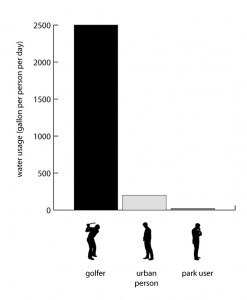framework
[framework]
As we know, golf courses are usually targeted as utilizing excessive amounts of water. It is reported that each golf player takes around 2500 gallons of water per day to support his game based on golf course average water use. This is the reason why golf courses are usually blamed by the society for water usage, especially considering only 200 gallons water usage per person per day.

If Audubon Park is to become a sustainable urban park of tomorrow, the issue of water demand and supply in the park must be resolved. With the surrounding context of the park, it is possible to construct a rainwater collection and usage system together with existing park resources. There are four goals to this model:
1. The rainwater could be stored on site then used to irrigate the lawn during dryer days;
2. The system is to resolves drainage problems in the park in lower land;
3. The pollutants from the building site (fertilizers, herbicides, pesticides, animal waste, automobile fluids, etc) are clean on site with constructed wetland system instead of those pollutants directly flowing to streams, rivers, and other sensitive aquatic ecosystems;
4. The system is to provide more efficient usage of the water. The hilly terrain makes applying water and water retention difficult. It is suggested that many golf courses use 20% to 50% more irrigation water than necessary.
Although there are retention ponds inside the park, there is no clue that they are related to the surrounding communities. We believe through this system the park could conserve water resources probably up to 80%.
reference:
1. wikipedia
2. allianceforwaterefficiency.org
